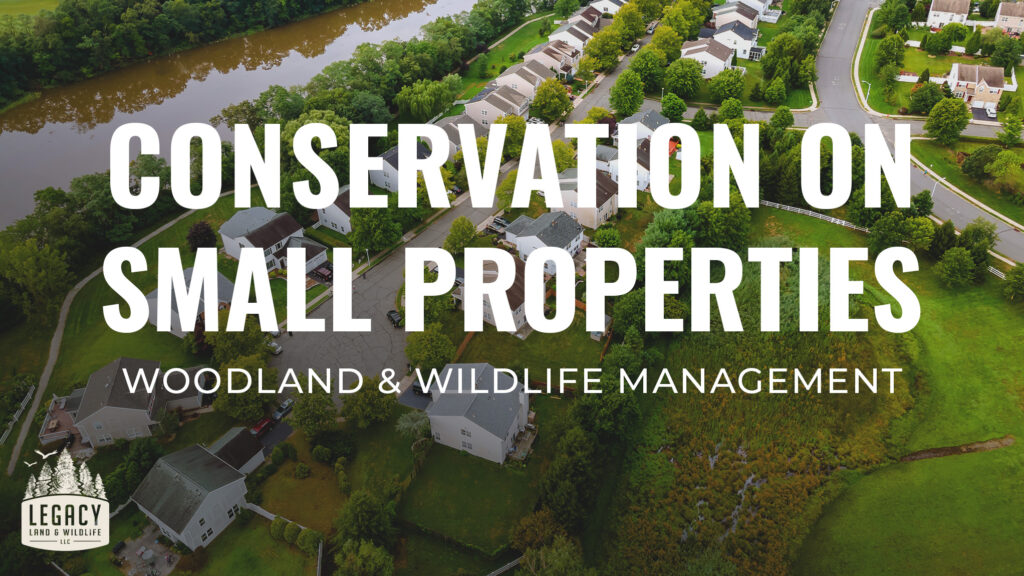
Woodland & Wildlife Management | Practicing Conservation on Small Properties in Ohio
We had enough with the status quo!
The spring of 2020 brought change to the landscaping around the front border of our house. The traditional landscaping needed to go—haustas, Japanese maple, juniper, etc.
Our mission was to create pollinator habitat. This proved to be a bit of a challenge, but we were able to establish crucial habitat (approximately 475 square feet). In fact, monarch butterflies showed up later in the summer to our surprise!
Thinking Small for Conservation
Many have the understanding that you need a large parcel of land to have any significant impact for the cause of conservation.
The purpose of this blog is to establish a concise case for conservation practices even on small properties (even less than 2 acres in size).
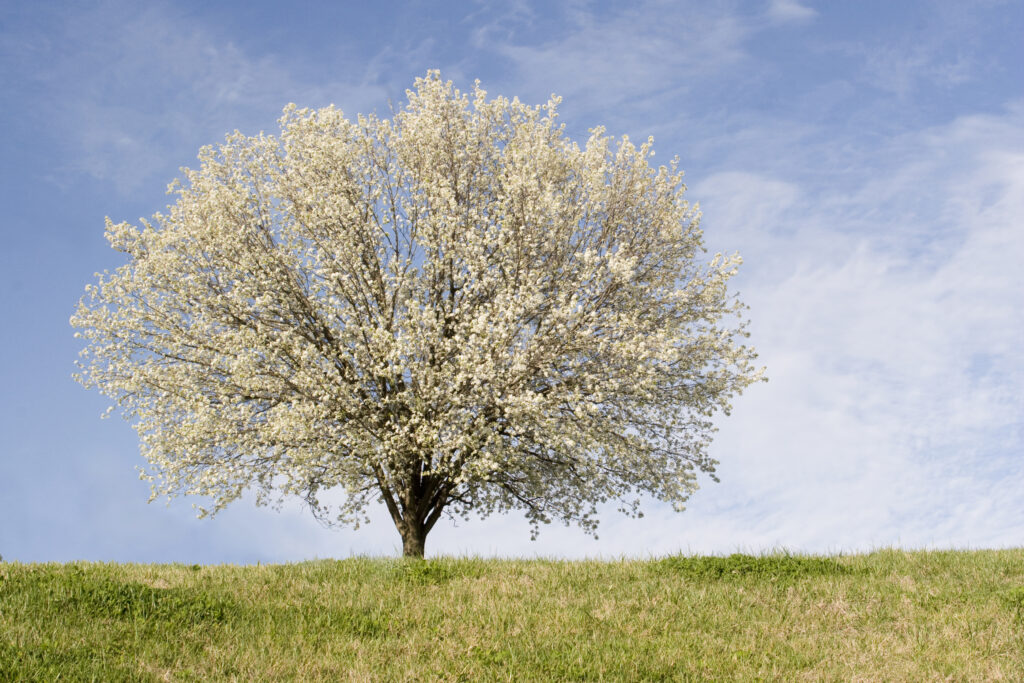
Invasive Species Control
Invasive species are prevalent and very persistent in many portions of forest throughout Ohio.
Common non-native invasive plants found in residential landscaping:
- Bradford pear
- Burning bush (winged euonymus)
- Privet
- Japanese barberry
- Bush honeysuckle
What should be done about invasive species?
Although a few of these are beneficial for pollinators (e.g. multiflora rose, bush honeysuckle, autumn olive, etc.), they should have a limited presence on the landscape—complete eradication is not possible for most species.
Description of the invasive plants and control methods can be found in the guides by following the links below.
Guides outlining designated invasive species found in Ohio:
NOTE: See the Ohio Revise Code regarding the sale, propagation, distribution, importing, and intentional dissemination of these plants.
The good news?
Alternatives are available that will not disappoint!
- Burning bush (winged euonymus) replaced by Red osier dogwood
- Privet replaced by arrow-wood
- Myrtle replaced by partridgeberry
- Japanese barberry replaced by black haw
The resources below will give you a good start to finding replacement alternatives.
Resources:
Alternatives for Invasive Plants in Ohio | Ohio Invasive Plants Council
Alternatives to Ohio’s Invasive Plant Species | Ohio Invasive Plants Council
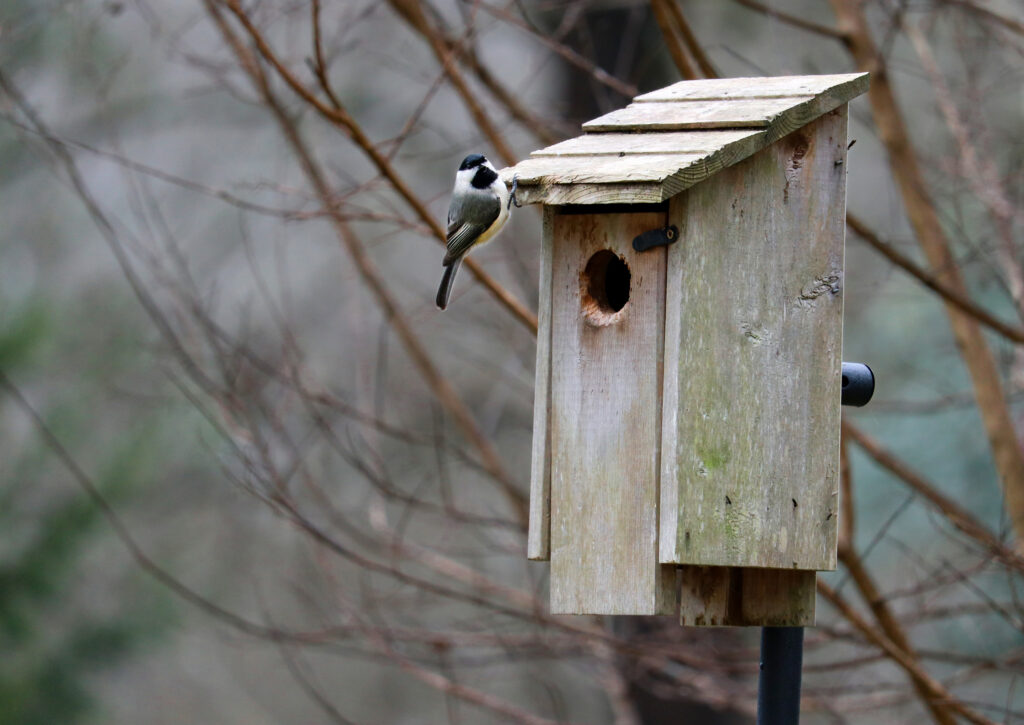
Habitat Boxes for Birds
Bird nesting boxes placed strategically around your property have the potential to attract a variety of bird species (i.e. bluebird, house wren, purple martin, etc.)
Consider the essential needs of the bird species you are attempting to attract to your habitat boxes:
- Cover | What habitat cover types does this bird prefer to nest?
- Food | What food sources are beneficial for this bird species?
- Water | Is there an immediate water source in the immediate proximity?
Common mistakes when installing nesting boxes:
- Wrong habitat
- Incorrect nesting box orientation
- Improper visitation to box
- Improper height
- Inadequate box dimensions
What bird species in Ohio will use habitat boxes for nesting?
- Eastern bluebird
- Barn owl
- House wren
- Purple martin
- Black capped chickadee
- Tree swallow
- Wood duck
- Flicker
What are the crucial features for installing a habitat box for birds[1]?
- Box dimensions
- Entrance hole diameter
- Hole distance above floor
- Floor dimensions
- Box height
- Target species
- Start of nesting season
Note: The target species will affect the specific location features for the box.
- Location
- Height above ground
- Open area (orchard, pasture, field, etc.)?
- Facing direction?
- Partial sunlight?
- Near brush pile?
- Mature forest?
- Near water or wetlands?
- Edge of forest?
A little research can go a long way to better understand the birds you are attempting to care for:
- The Cornel Lab | All About Birds: detailed birding information
- The Cornell Lab of Ornithology | Nest Watch: crucial nesting information
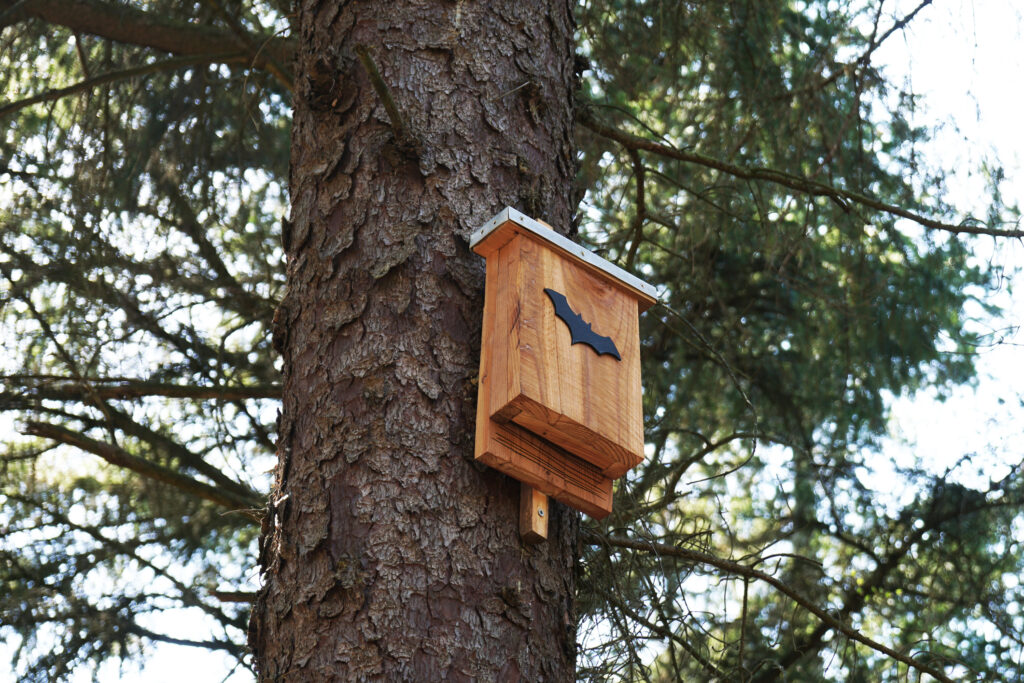
Habitat Boxes for Mammals
You may think it is an absurd idea to encourage bats to be present on your property. Bats play an integral part amongst the wildlife landscape.
White nose syndrome among bats has significantly impacted their populations—including the populations in Ohio (see this Ohio DNR resource).
Think about installing a bat box to assist with struggling bat populations.
Educate yourself on how you can assist with bat conservation efforts:
- White nosed syndrome
Ohio Department of Natural Resources
U.S. Fish & Wildlife Service: White-Nose Syndrome Response Team
- Bat 101
Mammals of Ohio: Field Guide (see pages 40–49)
Bat Conservation International
- Bat habitat management (on your property)
Other mammals that use habitat boxes for nesting and/or roosting:
- Squirrel (gray/fox)
- Squirrel (flying)
What are the crucial features for installing a habitat box for mammals[2]?
- Box dimensions
- Entrance hole diameter
- Hole distance above floor
- Floor dimensions
- Box height
- Target species
- Start of nesting season
- Times of year used for roosting
Note: The target species will affect the specific location features for the box.
- Location
- Height above ground
- Open area (orchard, pasture, field, etc.)?
- Facing direction?
- Partial sunlight?
- Near brush pile?
- Mature forest?
- Near water or wetlands?
- Edge of forest?
Do your part for the cause of bat conservation and other mammals.
Other Resources:
Bats
Resources for Building Wildlife Nesting & Roosting Boxes | Northwest Natural Resource Group
The Bat House Builder’s Handbook by Merlin Tuttle, Mark Kiser, and Selena Kiser (Bat Conservation International, Updated and Revised 2013)
Forest Management & Bats by Dan A.R. Taylor (Bat Conservation International)
Ohio Bat Conservation Plan: A Collaborative Effort to Guide Bat Conservation in the Sate of Ohio Though Habitat Management, Research, and Education (November 2018)
Flying Squirrels
Mammals of Ohio: Field Guide | Southern Flying Squirrel
The Southern Flying Squirrel by Marne Titchenell and Kathy Smith | Women Owning Woodlands
Making a Southern Flying Squirrel Nest Box: A Few Steps But Lots of Details by Don Althoff
Flying Squirrel Nestbox (by Nestboxbuilder.com)
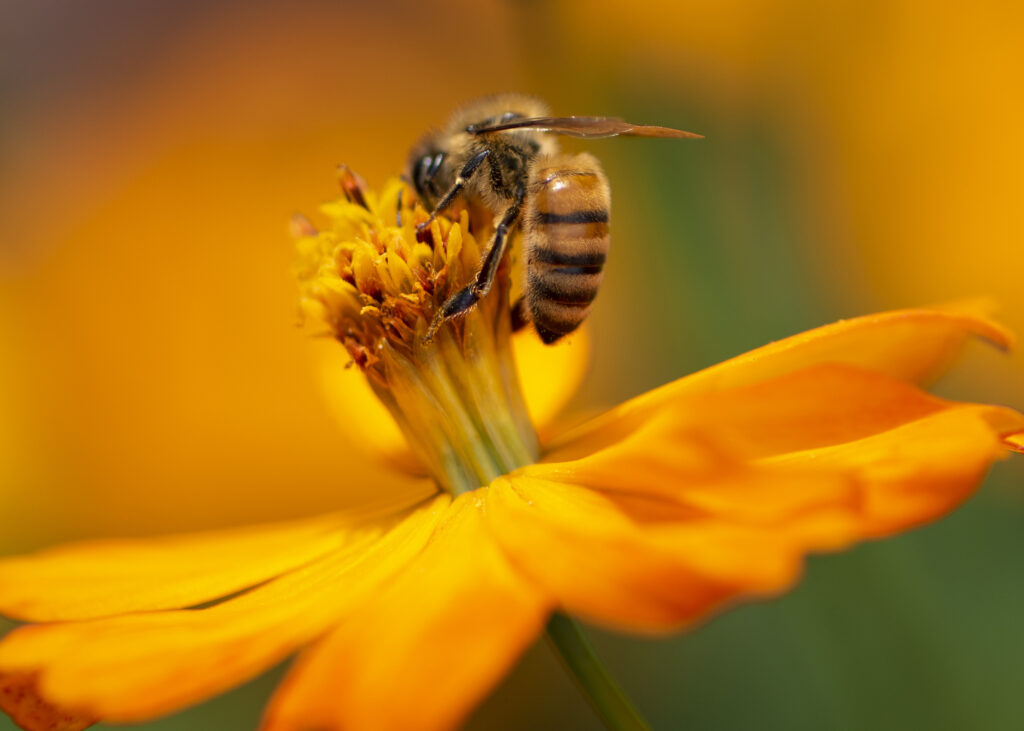
Pollinator Habitat
What do you think of when you hear “pollinators?”
Did you know that there are over 400 bee species in Ohio?
Other pollinators include butterflies, bees, flies, bats, wasps, moths, and beetles.[3]
A simple and strategic process of planning pollinator habitat is important:
- Research
- Site Selection
- Mapping
- Seed/Plant Selection
- Site Preparation
- Planting
- Maintenance
See this Ohio Pollinator Habitat Initiative resource for further details.
Looking for native plants in Ohio?
Ohio Native Plant Month provides an extensive list of nurseries that sell native plants including those beneficial for pollinators.
Below is a list of organizations that will help with planning your pollinator habitat:
Ohio Pollinator Habitat Initiative
The Ohio State University | Bee Lab
Medina County Beekeepers Association
Patience in planning will exponentially benefit your pollinator conservation efforts!
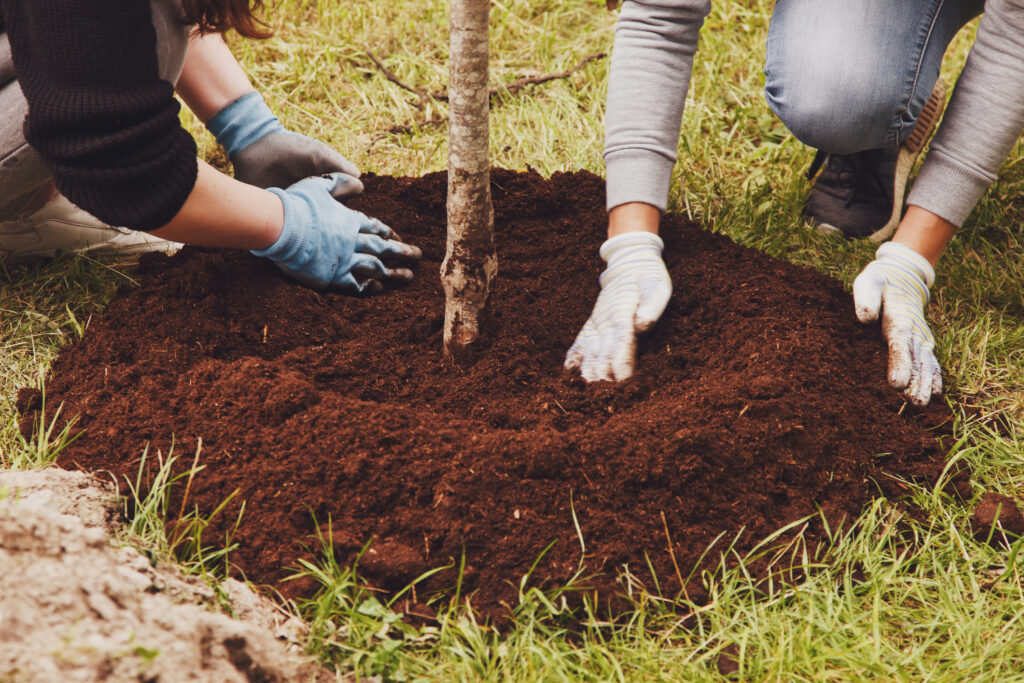
Tree Planting
Tree planting has recently been a hot topic due to the firestorm of conversations about climate change. The passion for tree planting was recently reignited by #TeamTrees.
Consider this simple six step process for tree planting:
- Site Conditions
- Nursery Selection
- Type of planting stock (bare-root, balled and burlap, containerized, cuttings, and live stake)
- Tree Selection (both for the site and at the nursery)
- Site preparation
- Tree planting
- Tree care and maintenance
Before planting trees on your property, consider the following site conditions:
- Hardiness zone
- Soil type
- Soil fertility
- Soil drainage classification
- Sun exposure (at the planting site)
- Presence of deer, rabbits, and voles
Compare these site conditions with the crucial specifics about the tree(s)/shrub(s) you desire to plant:
- Goals and objective for tree planting
- Is the tree/shrub an invasive species?
- Preferred hardiness zone
- Soil type and fertility preference
- Soil moisture tolerance
- Shade tolerance
- Fall foliage color
- Approximate growth patterns (height, width, etc.)
- Benefit to pollinator species
- Type of flowers
- Fruiting expectations
- Maintenance requirements (pruning, fertilization, etc.)
Common critical mistakes when planting trees:
- No or limited planning
- Lack of knowledge about tree species being planted
- Planting too deep
- Buying root bound trees
- Not removing the burlap and/or wire cage
- Wrong tree for the site
- Wrong site for the tree
- Planting too close to critical areas (house, electrical wires, etc.)
- Not installing fence (to deter deer, voles, etc.)
- Not enough sun at the planting site
- Plant trees or shrubs too close together
Here are some helpful resources for your tree planting library:
- Forest Landowners Guide to Tree Planting Success (Penn State Extension)
- Nursery Recommendations
- Legacy Land & Wildlife LLC Tree Planting Guide
- Live Staking for Stream Restoration | Penn State Extension
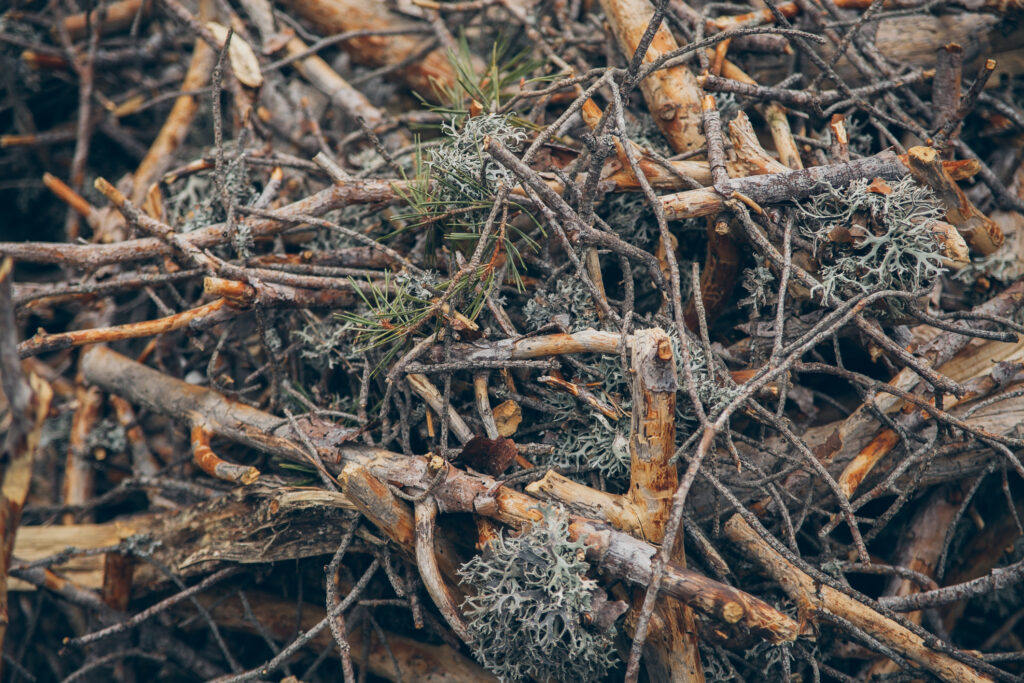
Habitat Piles
“Few wildlife management practices can provide a more important part of wildlife habitat for the amount of effort as brush piles.”[4]
Strategic placement of habitat piles and down woody debris is very beneficial for a variety of wildlife species.
A common mistake for woodland owners is to maintain forest landscapes like their yard.
Benefits of habitat piles:
- Creating cover for small songbirds, small mammals, and amphibians.
- Establish habitat diversity
- Allow nutrients to return to the soil
- Great way to utilize trees and shrubs during forest stand improvement operations
- Greatly reduce time, money, and effort in “cleaning up the woods”
Types of habitat piles to think about:
- Tree limbs and logs
- Large hollow logs
- Rocks (or other non-combustible materials)
- Windrows of trees
- Living brush
See the following resources for ways to construct habitat piles in your woods:
Brush Piles for Wildlife (Connecticut Department of Energy and Environmental Protection)
Habitat How-To’s: Brush Piles (The Kentucky Department of Fish and Wildlife Resources)
Down Woody Debris
For most, downed woody debris (also known as coarse woody debris) on the forest floor is messy. Many cleanup (or burn) this material so that it looks more appealing to view—to look more like a well-manicured lawn.
The forest landscape should be treated with care by understanding the integrated biological relationships.
The ignorance of this issues looms in the minds of people largely because of preference for tidiness.
Please consider leaving a portion of this woody debris for the following purposes:
- Drumming logs for ruffed grouse
- Growing environment for various fungi (including many edible mushrooms)
- Forest floor invertebrate diversity (ants, springtails, slugs, millipedes, pill bugs, spiders, etc.)
- Nutrients recycling
- Food sources for various animals
- Cover diversity
- Bedding areas for white-tailed deer
- Nesting cover for birds (including wild turkey)
- Security cover for cottontail rabbits
- Help deter browsing pressure from deer
A little education and modification of your perspective will go a long way to understand the integral role of down woody debris.
Resources:
Effects of Late States of Emerald Ash Borer (Coleoptera: Buprestidae)-Induced Ash Mortality on Forest Floor Invertebrate | Kayla Perry & Daniel Herms | Journal of Insect Science 2017 17(6): 119; 1–10
Dead Wood for Wildlife | Penn State Extension
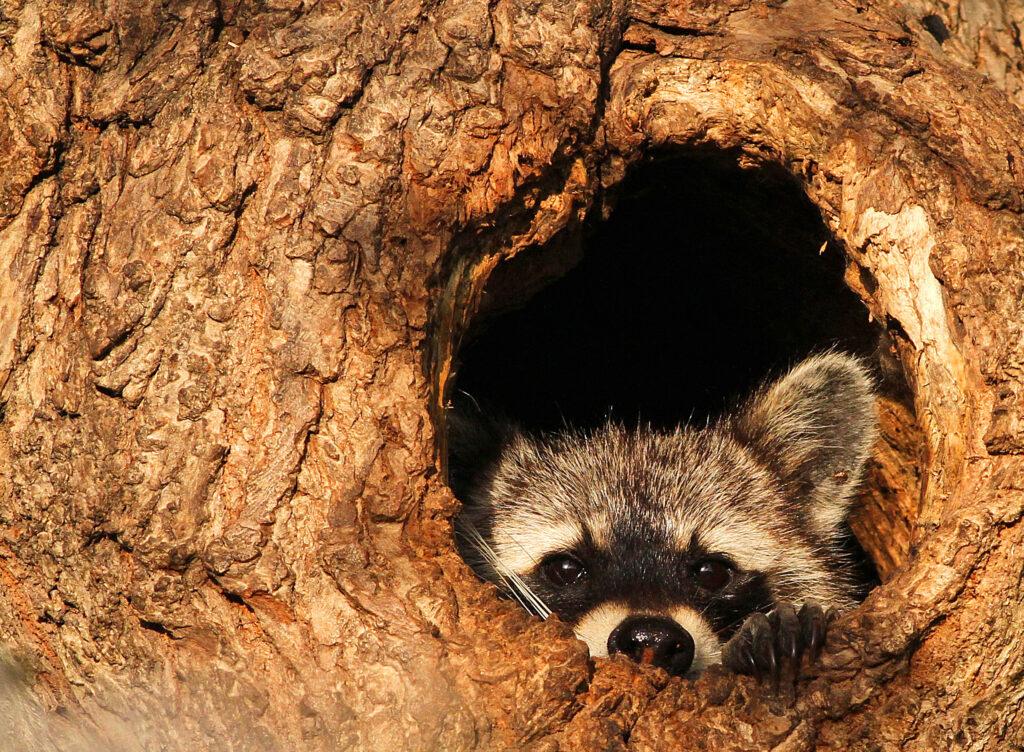
Den Trees | Snags and Cavity Trees
The functions of these trees are to provide a combination of the following: nesting, cover, roosting, perching, and food sources.[5] Eighty-five (85) species of birds in North America utilize these for cover and feeding.[6]
What are the prime characteristics for den trees?
- Tree species: select trees that have a more durable heartwood (i.e. white oak, etc.)
- Tree size (height and diameter): will affect the type and diversity of animal species to occupy the tree
- Living or dead: both have advantages for wildlife
- Mast production: supply food for wildlife
What are some tree species that make beneficial long-lasting snags trees?[7] [8]
- White oak
- Black oak
- Cottonwood
- Elm
- Beech
- Red maple
- Sugar maple
- Hickory
Other trees that tend to develop cavities[9]:
- American sycamore
- Sassafras
- Black gum
- Black locust
- Yellow poplar
Techniques for creating snags:
- Girdling
- Tall stump
- “Planting”
- Tree topping
How would animals in your Ohio backyard use these?
- Food (insects under bark or in decaying wood): Brown creeper, various woodpeckers, etc.
- Roosting: Indiana bat, gray tree frog, etc.
- Perching: Morning dove, bald eagle, hawks, etc.
- Nesting: black capped chickadee, eastern bluebird, wood ducks (near secluded wetlands), various woodpecker species including pileated woodpecker (see this comprehensive list of native species in Ohio supplied by the Ohio Bird Conservation Initiative)
Habitat boxes are a great alternative for den trees (see the previous blog)
Resources:
NestWatch | The Cornell Lab or Ornithology
Protecting Den Trees and Snags | Missouri Department of Conservation
Snag for Wildlife | Connecticut Department of Energy and Environmental Protection
Dead Wood for Wildlife | Penn State Extension
Snags and Cavity Trees | Kentucky Department of Fish and Wildlife Resources
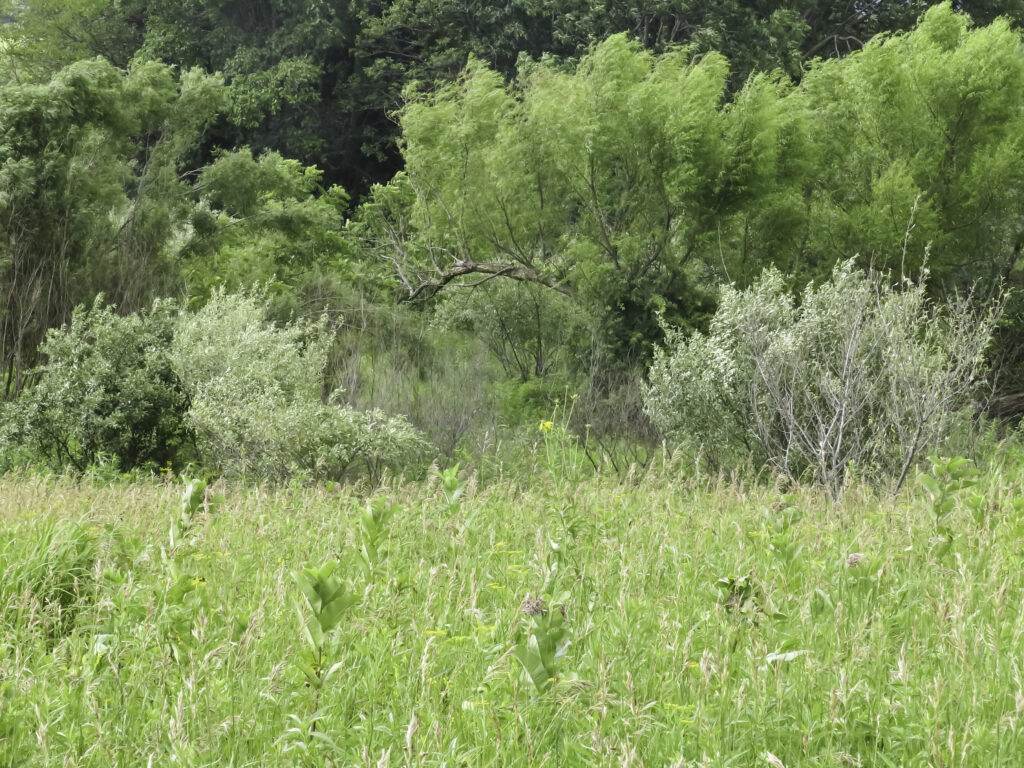
Edge Feathering
Edge is arguably the most crucial habitat for wildlife. Further, it is probably the most overlooked portion for improvement.[10] In fact, the most beneficial areas are the most unsightly to humans.
Edge is the meeting location of two distinct vegetation communities.[11]
Concerning conservations issues reason for seriously considering this practice:
- Declining crucial habitat for many wildlife species (pheasant, quail, and ruffed grouse in Ohio)
- Declining populations of wildlife
- Declining species diversity
- Increased invasive species
- Increased insects and disease
Goals for Edge feathering:
- Eliminate hard transitions and establish gradual transition
- Create specific areas of crucial wildlife habitat
- Encourage species diversity (plant and animal communities)
- Promote diverse habitat structure (both horizontal and vertical)
Some objectives to consider in order to meet your goals:
- Plant shrubs and trees that benefit wildlife
- Strategically remove trees along the edge
- Create habitat piles along this transition
- Leave residual trees (in strategic intervals) for proper spacing
- Leave residual trees that will benefit wildlife
- Leave any current or potential snags
- Leave tops from cut trees for immediate cover
- Utilize cut wood as firewood
Dimensions and Distinctives of Edge Feathering
- Zone 1: remove 75% of the overstory canopy
- Should contain grasses and forbs
- Zone 2: remove 50% of the overstory canopy
- Should contain briars, shrubs, vines, etc.
- Zone 3: remove 25% of the overstory canopy
- Should contain smaller trees and larger shrubs
- Each zone should be 1/3 of the total width
NOTE: This is a good starting point. It may be modified to fit the needs on your property.
Resources:
Edge Feathering | Kentucky Department of Fish and Wildlife Resources
Edge Notching
Most include this stewardship practice with edge feathering.
A distinction should be made from this because it involves creating a notch of additional habitat (adjacent to the feathered edge) within the open space landscape.
Some goals to consider:
- To encourage the establishment of native vegetation
- Provide diverse food source
- Increase the horizontal and vertical habitat structure diversity
- Establish pollinator friendly habitat
- Encourage the establishment of the grass-forb and shrub-seedling successional stages
- Increase habitat that benefit animal species which prefer early successional habitat
Several objectives that accomplish this:
- Stop mowing and allow area to grow back
- Plant a pollinator plot
- Plant wildlife friendly shrubs (hard and soft mast)
- Disc the desired area
- Install desired nesting boxes (for birds and bats)
Resource:
Edge Feathering | Kentucky Department of Fish and Wildlife Resources
Assessing Avian Response to Habitat Management Along Pipeline Right-of-ways in Eastern Ohio | Lewis M. Lolya | Master of Science Thesis
[1] Robert A. Pierce II, “Nest Boxes for Wildlife.” University of Missouri Extension, https://extension. missouri.edu/publications/g9413 (accessed February 27, 2021).
[2] Robert A. Pierce II, “Nest Boxes for Wildlife.” University of Missouri Extension, https://extension. missouri.edu/publications/g9413 (accessed February 27, 2021).
[3] Bee Lab. “Ohio Pollinator Health, Protection and Conservation Plan,” The Ohio State University, https://u.osu.edu/beelab/ohio-pollinator-plan/ (accessed February 27, 2021).
[4] Habitat Improvements Program, Habitat How-To’s: Brush Piles (Kentucky): 1.
[5] “Den Trees,” Washtenaw County Conservation District, https://www.washtenawcd.org/den-trees.html (accessed February 28, 2021).
[6] Habitat Improvements Program, Habitat How-To’s: Snags and Cavity Trees (Kentucky): 1.
[7] My Land Plan. “How to Create and Maintain Snags and Cavities in Living Trees,” American Forest Foundation, https://mylandplan.org/content/how-create-and-maintain-snags-and-cavities-living-trees (accessed February 28, 2021).
[8] Habitat Improvements Program, Habitat How-To’s: Snags and Cavity Trees (Kentucky): 2.
[9] Ibid.
[10] Rob Chapman, “Woodland Edge Feathering,” Indiana Woodland Steward 29, no. 2 (Summer 2020), under “Publications,” https://www.inwoodlands.org/edge_feathering/ (accessed February 28, 2021).
[11] Ibid.
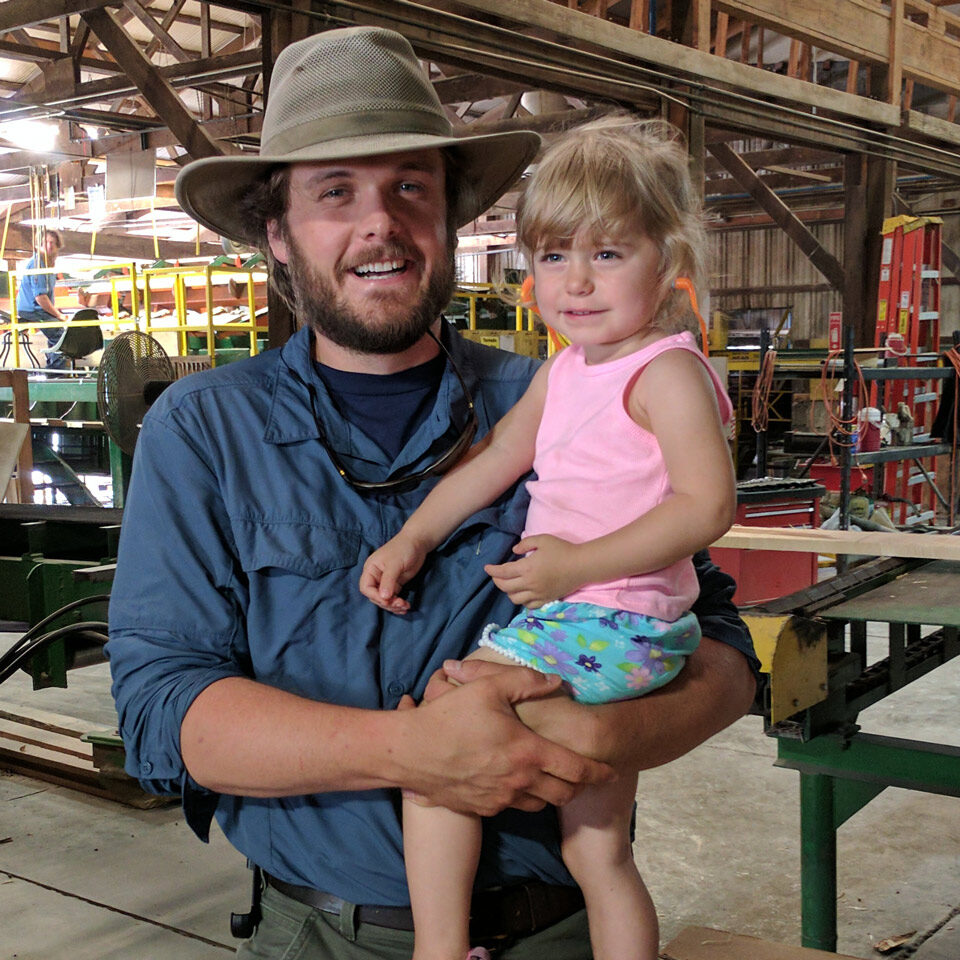
About Dave Duell
Outdoorsman, conservationist, forester, father, husband, and Christian: Dave Duell owns and manages Legacy Land and Wildlife LLC and provides conservation and forestry services and guidance to Pennsylvania and Ohio. It's his passion to assist and educate land owners and other outdoors enthusiasts about the importance of being a good steward of their land and the wildlife therein. Learn more about Dave and Legacy Land & Wildlife by clicking here.

Legacy Land & Wildlife LLC is your resource for forestry, conservation, and land & wildlife stewardship. Based in Eastern Ohio, we provide services to Ohio, Pennsylvania, and beyond.
